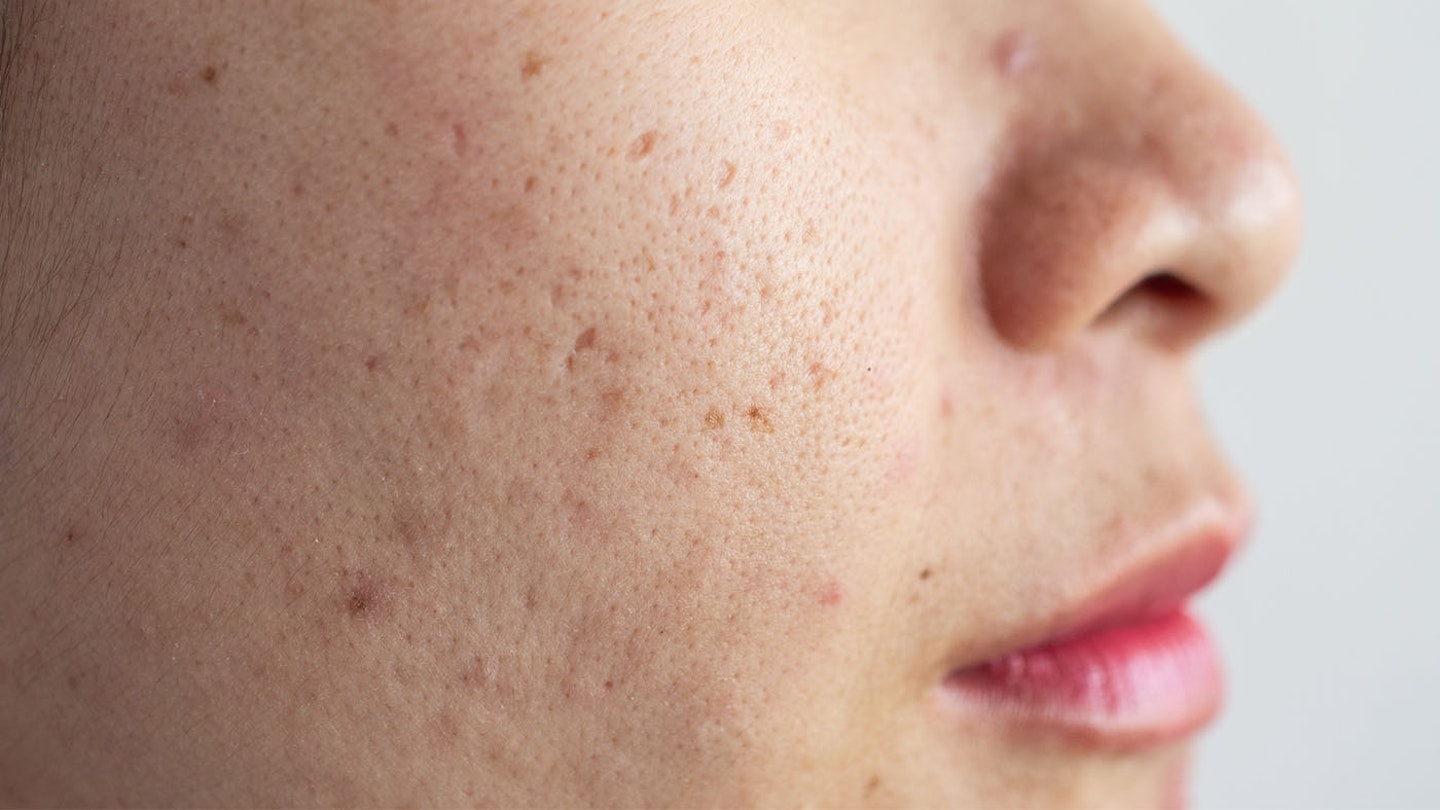Acne occurs where bacteria infect a hair follicle which has been blocked with excessive sebum, causing blackheads and whiteheads which then develop into full blown acne with spots and pustules.
It can be a genetic condition, the result of hormonal changes (e.g. puberty, menstrual cycle, menopause or pregnancy) and even environmental factors such as stress or exposure to pollution.
It’s very important not to pick spots which can lead not only to an infection but also acne scarring. Acne scars can be distressing and upsetting for many and it's understandable you might be keen to know what you can do to help.
We spoke to GP and Medical Director of Cosmedics skin clinics Dr Ross Perry to find out how to get rid of acne scars.
Types of acne scars
Acne scars fall into four broad categories with different characteristics. You may have one predominant type of scarring or a mixture of all four. Understanding the nature of the scars is important in assessing the best possible treatment.
“Ice pick” - Scars are sharp and deep V-shapes
“Boxcar” - Scars tend to be square-shaped and may often be found on the cheeks and temples.
“Rolling scars” - These are caused by bands of scar tissue that form under the skin, giving the surface of the skin a rolling and uneven appearance.
Hypertrophic Scars and Keloids - Hypertrophic scars are firm, raised scars that grow above the surface of the skin. Hypertrophic scars caused by acne are most often found on the torso, especially in men, but they can also appear on other areas of the body. There is a number of treatments for this type of acne scarring which can include steroid creams, silicone gels, cryotherapy (freezing the scars with liquid nitrogen), tapes, pulsed dye laser treatments, or injections to help shrink and flatten the scarf.
Acne scarring treatment
Dermaroller microneedling can be used for facial or body acne scars. This is a type of treatment that uses small needles to cause tiny punctures in the skin. These small contact points encourage the body to create a wound healing response and renew the skin cells. This is particularly beneficial for acne scars.
Subcision is an effective method used to treat rolling scars. This is a simple surgical procedure, performed under local anesthesia on an out-patient basis. A needle is inserted parallel to the skin, cutting the fibrous base of the scar that is pulling down on the skin from below. Once the bands have been cut, the skin looks smoother
Medical chemical peels can help to smooth the surface of the skin. It works by progressively removing old, dead skin, enabling the healthy layers beneath to be at the surface. The treatment involves a deep, medical-grade exfoliation to reveal fresh, new skin gently smoothing and erasing fine lines and acne scarring. The strength of the peel is usually decided by the doctor to achieve safe realistic results. Treatments such as microdermabrasion work in a similar way, and thanks to brands like Lux Skin, you can achieve results from home at an affordable price.
Dermal fillers can be used to help an array of skin problems, one of them being acne scars. A tiny amount can temporarily plump and smooth over any skin craters left behind from acne.
Retinol goes hand in hand with anti-ageing treatments but can also be used to unclog pores and fade scars. It’s a more gradual treatment but is popular for leaving skin looking brighter and smoother. A gentle form of this that could be beneficial is rosehip oil.
IPL lasers have a fantastic anti-inflammatory role and can take action against the bacteria that cases acne, but they also work well to reduce redness and skin staining. Just be prepared to undergo multiple sessions and maintenance treatments for good results.
You should make sure you’re using the correct treatments for your acne and if your symptoms are severe, you should be using prescription treatments from your GP or Dermatologist, not simple over-the-counter products.
Dr Ross Perry's top acne tips
• Establish a daily skincare routine. Acne is not caused by poor hygiene, but keeping your skin clean can help to reduce the blockages in the skin that cause acne spots.
• Use a gentle cleanser and one containing salicylic acid, glycolic acid or benzoyl peroxide, which all help to break down the bonds between dead skin cells, eliminating them from the surface of the skin.
• Use a gentle oil free moisturiser.
• Try not to keep touching your face, especially your chin which naturally produces more oil and sebum and definitely don’t squeeze.
• If skin is red and angry you might want to try dabbing on some tea tree oil or witch hazel to soothe the skin.
• Drink plenty of water to keep the skin hydrated and lay off the alcohol.
• Eating a healthy diet consisting of leafy greens, fish and probiotics will also help.
• It’s important to also use an oil free daily SPF30 which is non greasy as the sun can also cause breakouts.
• Over the counter products such as cleansing lotions, gels, foams, leave on products and specific acne skin kits are available and can work efficiently. The most popular over the counter products to buy include Benzoyl peroxide which kills the bacteria that cause acne, helps remove excess oil from the skin and removes dead skin cells. Salicylic acid helps prevent pores from becoming plugged and Alpha hydroxy acids help to remove dead skin cells and reduce inflammation.
